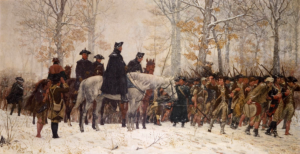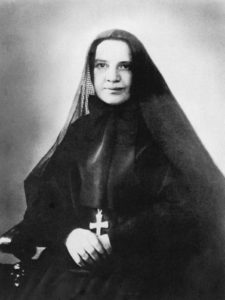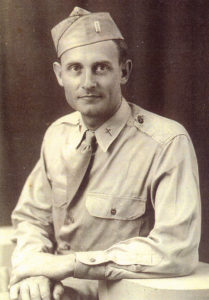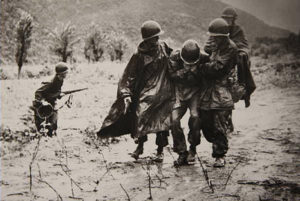Here’s to a Great Story
by Rachel Shrader
Happy Independence Day! Our country’s 244th birthday gives us an opportunity to pause and reflect on the many blessings that God has bestowed upon us as Americans. It seems fitting that this day has come upon us in the midst of the national turmoil surrounding the vandalization of monuments and the demonization of many figures from our history. For us as Catholics, it has been particularly grievous to see some of our own saints targeted.

I for one love the American story, and that sentiment does not spring only from patriotism, nor from a naïve notion that our story is anywhere near perfect. I love it because it’s a great story. All day long I could listen to the tale of how a bunch of underdog, rag-tag rebels ousted an empire and started an experiment based on the idea that all men are created equal, that they have a dignity as children of God that no one can take from them. It’s too far-fetched. You couldn’t write this stuff. How on earth did those Americans do it? How did they win, how did they reconstruct after a brutal civil war? What about Gettysburg? How did those Normandy landings happen? Let’s hear the story again. And again and again and again.
So, on this anniversary of the adoption of the Declaration of Independence, I contend that our country boasts a great company of men and women – many of them Catholic – who accomplished extraordinary things to build up these United States of America. As an antidote to the misinformation and anger currently reigning in the public square, I invite you to join me in a toast to some of my favorite Catholic characters from the American story and to the beautiful country they helped create.
St. Junípero Serra
Born on the island of Mallorca, Spain, in 1713, St. Junípero was educated by the Franciscans, joined the  order at the age of 16 and was later ordained a priest. Intellectually gifted, he achieved a high level of education and worked as a professor and academic for many years. But his heart yearned for missionary work, and at the age of 35, he left his successful life behind and set sail for Mexico, landing at Vera Cruz and walking 250 miles on foot with a companion to Mexico City. During the journey St. Junípero sustained an injury to his leg that would plague him the rest of his life.
order at the age of 16 and was later ordained a priest. Intellectually gifted, he achieved a high level of education and worked as a professor and academic for many years. But his heart yearned for missionary work, and at the age of 35, he left his successful life behind and set sail for Mexico, landing at Vera Cruz and walking 250 miles on foot with a companion to Mexico City. During the journey St. Junípero sustained an injury to his leg that would plague him the rest of his life.
After 18 years as a missionary in central Mexico and the Baja peninsula, he set off for modern-day California, where he founded missions that would become some of California’s most famous cities, such as San Diego and San Francisco. He fought for the just treatment of the Native Americans at the missions, traveling all the way back to Mexico City in 1773 to defend their rights before the Viceroy.
Leg injury and all, the indefatigable “Apostle of California” walked thousands of miles during his life to spread the Faith and care for the faithful of the missions, and he died at Mission San Carlos Borromeo in 1784.
St. Frances Xavier Cabrini
St. Frances is the first United States citizen to be canonized. She hailed from a small town near Milan, Italy  and spent the first part of her life in her home country, founding the Missionary Sisters of the Sacred Heart of Jesus with seven other sisters in 1880. She dreamed of undertaking missionary work in China, but Pope Leo XIII recommended that, instead of going east to China, she head west – to the United States. She and her sisters arrived in New York City to work among the Italian immigrants there, and they founded schools, a hospital, orphanages and organized catechism and education classes.
and spent the first part of her life in her home country, founding the Missionary Sisters of the Sacred Heart of Jesus with seven other sisters in 1880. She dreamed of undertaking missionary work in China, but Pope Leo XIII recommended that, instead of going east to China, she head west – to the United States. She and her sisters arrived in New York City to work among the Italian immigrants there, and they founded schools, a hospital, orphanages and organized catechism and education classes.
The work of the sisters spread far beyond the borders of New York. St. Frances founded 67 institutions in New York City, Chicago, elsewhere in the United States and in Latin America and Europe.
St. Kateri Tekakwitha
St. Kateri’s mother was a Catholic Algonquin and her father a chief of the Mohawk. When she was a child,  her village suffered a smallpox epidemic, which took the lives of her parents and little brother, scarred her face and impaired her eyesight. In her village she heard the preaching of the “Blackrobes” – the Jesuit missionaries who worked in New York and Canada, the most famous of whom, St. Isaac Jogues and his companions, had been martyred soon before her birth. She was baptized and eventually traveled 200 miles on foot to Sault Saint-Louis, a Christian Indian village near Montréal, to remove herself from the persecution she faced in her own village. She took a vow of virginity and lived her life in prayer and penance, going to her reward in 1680 at the age of 24. At her death, witnesses say that the scars on her face disappeared and her face became like that of a healthy young woman. She is called the “Lily of the Mohawk” and was canonized in 2012, the first Native American to become a saint.
her village suffered a smallpox epidemic, which took the lives of her parents and little brother, scarred her face and impaired her eyesight. In her village she heard the preaching of the “Blackrobes” – the Jesuit missionaries who worked in New York and Canada, the most famous of whom, St. Isaac Jogues and his companions, had been martyred soon before her birth. She was baptized and eventually traveled 200 miles on foot to Sault Saint-Louis, a Christian Indian village near Montréal, to remove herself from the persecution she faced in her own village. She took a vow of virginity and lived her life in prayer and penance, going to her reward in 1680 at the age of 24. At her death, witnesses say that the scars on her face disappeared and her face became like that of a healthy young woman. She is called the “Lily of the Mohawk” and was canonized in 2012, the first Native American to become a saint.
Servant of God Chaplain Emil Kapaun
Born in the Czech farming community of Pilsen, Kansas, in 1916, Fr. Kapaun was ordained for the  Diocese of Wichita in 1940, joining the U.S. Army Chaplain Corps in 1944 and serving in the Burma-India theater of World War II. After earning his Master’s degree and doing pastoral work in Kansas, he returned to military service in 1948 by his own request. As a chaplain in the Korean War he was fearless in his duties, celebrating Mass on the battlefield, administering the sacraments, retrieving the wounded and burying the dead. He received the Bronze Star for bravery in action on August 2nd, 1950, after rescuing a wounded man despite intense enemy fire.
Diocese of Wichita in 1940, joining the U.S. Army Chaplain Corps in 1944 and serving in the Burma-India theater of World War II. After earning his Master’s degree and doing pastoral work in Kansas, he returned to military service in 1948 by his own request. As a chaplain in the Korean War he was fearless in his duties, celebrating Mass on the battlefield, administering the sacraments, retrieving the wounded and burying the dead. He received the Bronze Star for bravery in action on August 2nd, 1950, after rescuing a wounded man despite intense enemy fire.
But the actions that would earn him the Medal of Honor, our country’s highest military award for valor, occurred during and after the Battle of Unsan on November 1st-2nd, 1950. After his group was attacked, Chaplain Kapaun intrepidly ran about the battlefield, administering last rites and dragging the wounded to safety. Offered the chance to escape, he and a medic chose to stay with the wounded, and eventually he and his comrades were captured and marched to Prison Camp No. 5, 60-100 miles away.

In the midst of the horrendous conditions at the camp, Chaplain Kapaun tirelessly dedicated himself to the spiritual and physical care of the suffering soldiers. Though public prayers were forbidden, he snuck around to the various huts after dark to pray with the men and, defying orders, led them in an Easter service in 1951.
He fell ill not long after, and his captors transferred him to the camp “hospital” – in reality, a place where they left people to die. His men insisted on carrying him there themselves, and he forgave and blessed his captors as he went. He died alone in the hospital a few days later, only 35 years old. When the camp was liberated two and a half years later, his men made sure the story of their heroic chaplain was known.
I wish I had space here to bring you more tales of those who helped shape our country and provided her with some of her finest examples of courage, self-sacrifice and love for others. A few that I recommend researching if you don’t know about them: Fr. Pierre-Jean De Smet, St. Katharine Drexel, St. John Neumann…the list goes on. Like the men of Prison Camp No. 5, let us go forth and share the stories of our saints, that their heroism may inspire us to continue the great work they began. Tell these great tales to all the world, and when you’re done, I’ll want to hear them again. And again and again and again. +
Rachel Shrader was the editor and primary writer of the Missive from its inception in June 2017 until May 2020. She now contributes as a freelance writer, covering military topics, the international work of the FSSP, and FSSP parish life.
July 4, 2020








